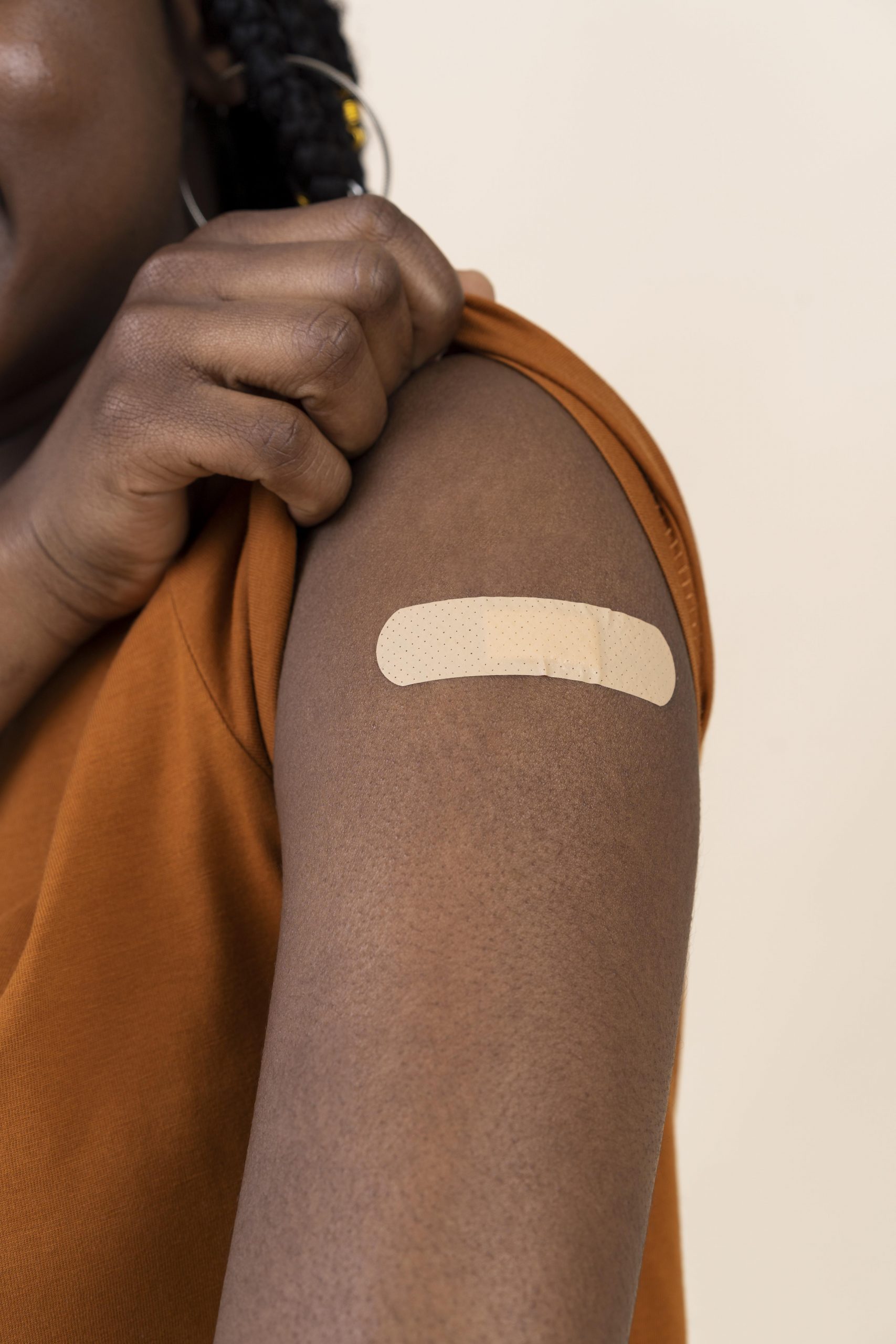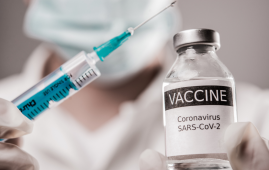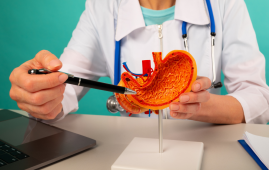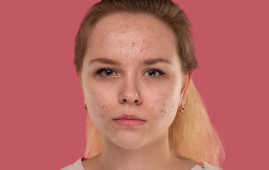

Engineers from the University of California, San Diego, have created a stretchy wearable ultrasound patch capable of serial, non-invasive, three-dimensional imaging of tissues as deep as four centimeters beneath the surface of human skin, with a spatial precision of 0.5 millimeters. This novel technology offers a non-invasive, longer-term alternative to conventional procedures, as well as increased penetration depth.
Sheng Xu, a professor of nanoengineering at UC San Diego Jacobs School of Engineering and the study’s corresponding author, led the research. The research, titled “Stretchable ultrasonic arrays for three-dimensional mapping of the modulus of deep tissue,” was published in the May 1, 2023, issue of Nature Biomedical Engineering.
“We invented a wearable device that can frequently evaluate the stiffness of human tissue,” said Hongjie Hu, a postdoctoral researcher in the Xu group and study co-author. “In particular, we integrated an array of ultrasound elements into a soft elastomer matrix and used wavy serpentine stretchable electrodes to connect these elements, enabling the device to conform to human skin for serial assessment of tissue stiffness.”
The wearable ultrasound patch can enable serial, non-invasive, three-dimensional mapping of deep tissue mechanical characteristics. This has several important applications:
- Serial data on diseased tissues can provide critical information on the progression of diseases such as cancer, which generally causes cells to stiffen, in medical research.
- Monitoring muscles, tendons, and ligaments can assist in the diagnosis and treatment of sports injuries.
- Current treatments for liver and cardiovascular diseases, as well as some chemotherapeutic medicines, may have an impact on tissue stiffness. Continuous elastography may aid in determining the efficacy and distribution of these drugs. This could help in the development of new therapeutics.
This technology, in addition to monitoring malignant tissues, can be used in the following scenarios:
- Monitoring of liver fibrosis and cirrhosis. Medical experts can precisely trace the evolution of the disease and choose the best course of treatment by using this technology to assess the degree of liver fibrosis.
- Evaluating musculoskeletal problems such as tendinitis, tennis elbow, and carpal tunnel syndrome. This technique can provide vital insight into the course of these disorders by monitoring changes in tissue stiffness, allowing doctors to build tailored treatment strategies for their patients.
- Myocardial ischemia diagnosis and monitoring. Doctors can detect early signs of the illness and intervene in time to prevent further harm by evaluating artery wall flexibility.
The wearable ultrasound patch accomplishes the detection function of traditional ultrasound and also breaks through the limitations of traditional ultrasound technology, such as one-time testing, testing only within hospitals, and the need for staff operation.
“This allows patients to continuously monitor their health status anytime, anywhere,” said Hu.
This could help reduce misdiagnoses and fatalities, as well as significantly cut costs by providing a non-invasive and low-cost alternative to traditional diagnostic procedures.
“This new wave of wearable ultrasound technology is driving a transformation in the healthcare monitoring field, improving patient outcomes, reducing healthcare costs, and promoting the widespread adoption of point-of-care diagnosis,” said Yuxiang Ma, a visiting student in the Xu group and study co-author. As this technology continues to develop, it is likely that we will see even more significant advances in the field of medical imaging and healthcare monitoring.”
The array adapts to human skin and acoustically links with it, enabling precise elastographic imaging verified by magnetic resonance elastography.
The device was used in tests to map three-dimensional distributions of the Young’s modulus of tissues ex vivo, detect microstructural damage in volunteer muscles prior to the onset of discomfort, and monitor the dynamic recovery process of muscle injuries during physiotherapy.
The device is made up of a 16 by 16 array. Each element is made up of 1-3 composite elements and a backing layer constructed of a silver-epoxy composite designed to absorb excess vibration, increasing bandwidth and axial resolution.
Such technology must use an ultrasound wave to record the motion of scattering particles in the sample and calculate their displacement fields using a normalized cross-correlation algorithm. The scattering particles are quite small in size, resulting in feeble reflected signals. Such faint signals necessitate highly sensitive technology.
Existing production processes require high-temperature bonding, which can result in substantial, irreversible thermal damage to the epoxy in piezoelectric materials. As a result, the transducer element’s sensitivity suffers dramatically.
“To address those challenges, we developed a low-temperature bonding approach,” said Hu. “We replaced the solder paste with conductive epoxy, which allows the bonding to be completed at room temperature without causing any damage to the element. In addition, we replaced the single-plane wave transmission mode with a coherent plane-wave compounding mode, which provides more energy to boost the signal intensity throughout the entire sample. Using these strategies, we improve the sensitivity of the device to make it perform well in capturing those weak signals from scattering particles.”
“A layer of elastomer with known modulus, the so-called calibration layer, can be installed on our device to further obtain quantitative, absolute values of tissues’ moduli,” said Dawei Song, a postdoctoral researcher at the University of Pennsylvania and study co-author. “This approach would allow us to obtain more complete information about tissues’ mechanical properties, thus further improving the diagnostic capabilities of the ultrasonic devices.”
Furthermore, advanced lithography, pick-and-place, and dicing techniques can be used to further optimize array design and fabrication, reducing the pitch and extending the aperture to achieve higher spatial resolution and a wider sonographic window.
“It would be easier to explore opportunities working with physicians, pursuing potential practical applications in clinics,” said Gao. “Our device shows great potential in close monitoring of high-risk groups, enabling timely interventions at urgent moments,” said Gao.
more recommended stories
 Lysosomal Function in Parkinson’s Disease Risk
Lysosomal Function in Parkinson’s Disease RiskThe genetic traits that affect the.
 Omega-6 Fatty Acid Role in Bipolar Disorder
Omega-6 Fatty Acid Role in Bipolar DisorderHigher concentrations of arachidonic acid, an.
 Transplant Drug Shows Promise in Slowing Alzheimer’s in Seizure Patients
Transplant Drug Shows Promise in Slowing Alzheimer’s in Seizure PatientsProtein imbalances, which heighten the excitability.
 Fentanyl Inhalation: Brain Damage Risks
Fentanyl Inhalation: Brain Damage RisksAfter treating a middle-aged man who.
 Enhanced Immune Response in New COVID-19 Vaccines
Enhanced Immune Response in New COVID-19 VaccinesAn improved vaccination offers an enhanced.
 Bioresorbable Wireless Sensor for Early Stomach Leakage Detection
Bioresorbable Wireless Sensor for Early Stomach Leakage DetectionIn a recent publication in Scientific.
 Neurocardiac Connectivity in Depression Treatment
Neurocardiac Connectivity in Depression TreatmentHeart rate deceleration and sadness may.
 Antioxidants: Impact on Quality of Life in Acne Vulgaris
Antioxidants: Impact on Quality of Life in Acne VulgarisA recent study published in the.
 Palliative Care Disparities for Opioid Users: Study Findings
Palliative Care Disparities for Opioid Users: Study FindingsIn contrast to individuals devoid of.
 Brain Pulsations Linked to High BMI
Brain Pulsations Linked to High BMIAccording to a new study from.

Leave a Comment